Catacombs Of Kom El Shoqafa – The Underground Hidden Treasures Of Alexandria
The Catacombs of Kom El Shoqafa, meaning the “Mound of Shards” or “Potshards” is a subterranean necropolis beneath the streets of modern-day Alexandria in Egypt.
It is considered one of the seven wonders of the Middle Ages.
Tombs of the Dead in Lom El-Shoqafa combine a mixture of Roman, Greek and Egyptian cultures.
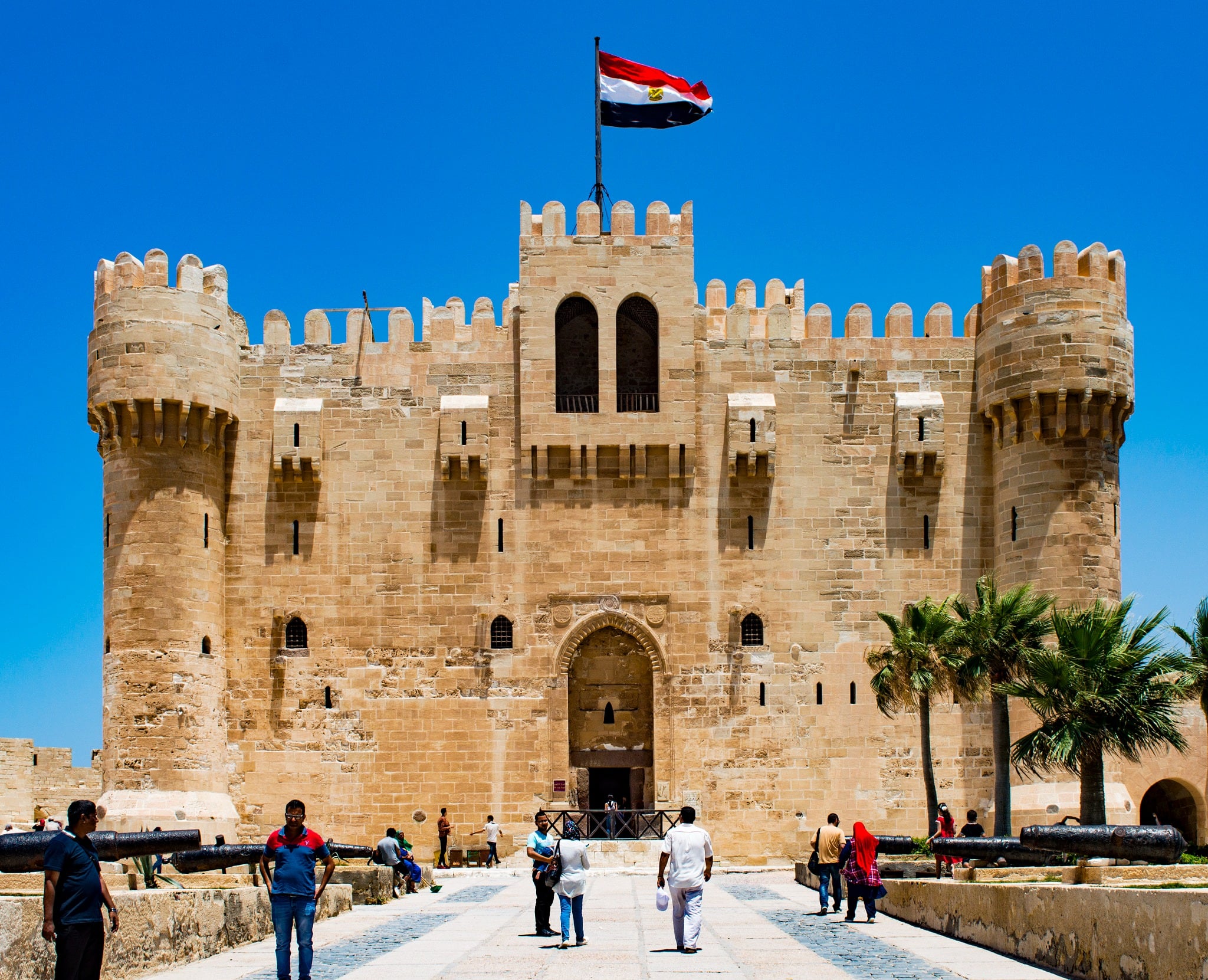
Location Of The Catacombs Of Kom El Shoqafa
The historic site is located just a three-hour drive from Cairo.
It is renowned for its rich Roman heritage that dates back to the era of Alexander the Great.
Among its many ancient sites, the Catacombs of Kom El Shoqafa stands out as a remarkable attraction.
These catacombs are conveniently located near the main Corniche, Alexandria’s vibrant seafront promenade, making them easily accessible for visitors exploring the city.
The proximity to the Corniche allows travelers to seamlessly blend a visit to this ancient necropolis with a stroll along the scenic Mediterranean coastline.

The Construction Of The Catacombs
These catacombs were initially constructed in the 2nd century AD during the reign of the Antnine emperors.
They are located at around a depth of 100 feet underground.
Originally, they were intended to be a family tomb, commissioned by a wealthy family in Alexandria.
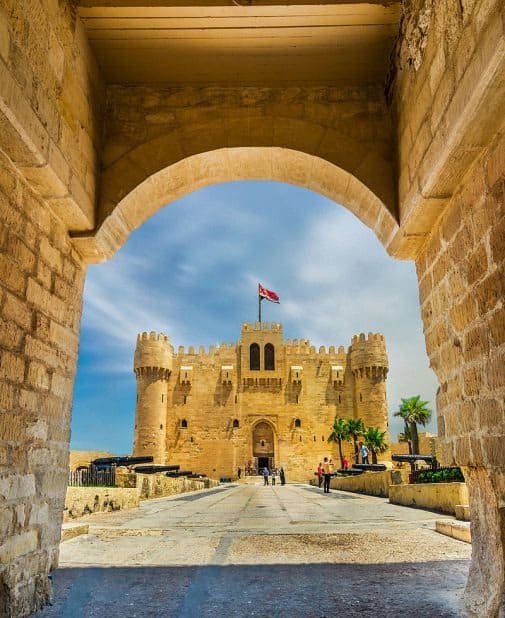
Over the next 300 years, they expanded to accommodate up to 300 bodies. The simple family tomb grew into a sprawling necropolis.
This expansion was likely driven by the increasing number of burials and the continuous use of the site by the local community.
The catacombs developed into a complex network of tunnels and chambers, with three distinct levels carved deep into the bedrock.
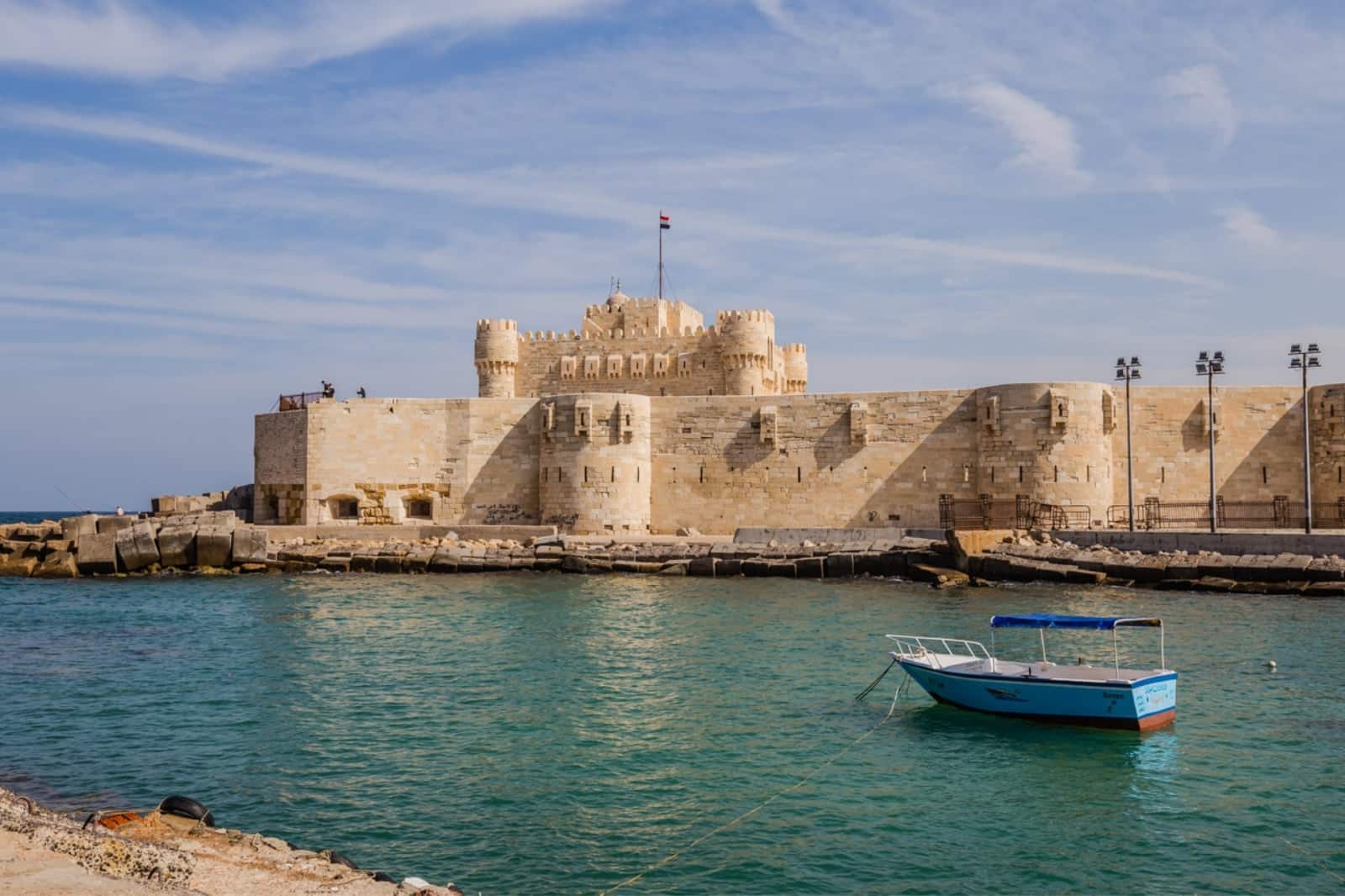
The Origin Of The Name
The Catacombs of Kom El Shoqafa, also known as the “Mount of Shards.”
The name refers to the numerous clay objects and stone constructions found at the site.
These clay objects were left behind by visitors who brought food and drink in containers, which they then shattered and discarded.
This archaeological site has been known by several names over the centuries.
It is often referred to as “catacombs” due to its similarity to the Christian catacombs in Rome.
Later, the Arabs named it “the Treasure Hill,” reflecting the wealth of artifacts and historical significance uncovered there.
How Were Catacombs Found?
The Catacombs of Kom El Shoqafa were discovered by accident in 1900 when a donkey accidentally fell through the ground into the access shaft.
Then, people found the hidden entrance to the ancient necropolis.
So far, three sarcophagi have been found, along with additional human and animal remains added over time.
Architectural And Cultural Fusion
This ancient necropolis combines elements from Pharaonic funerary customs with Hellenistic and early Imperial Roman influences.
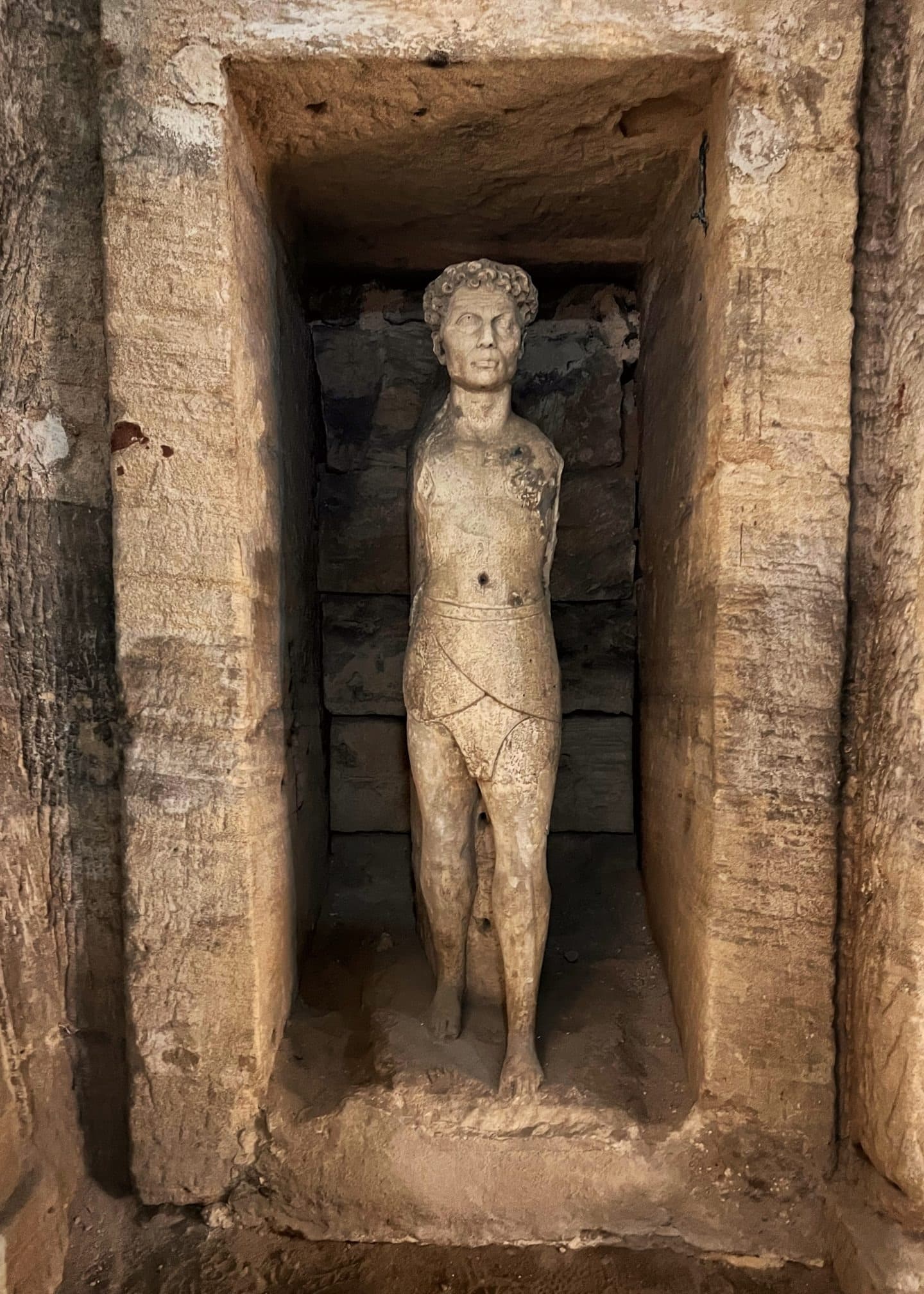
The catacombs feature a mix of Roman, Greek, and Egyptian styles, such as Egyptian statues dressed in Roman clothing and hairstyles.
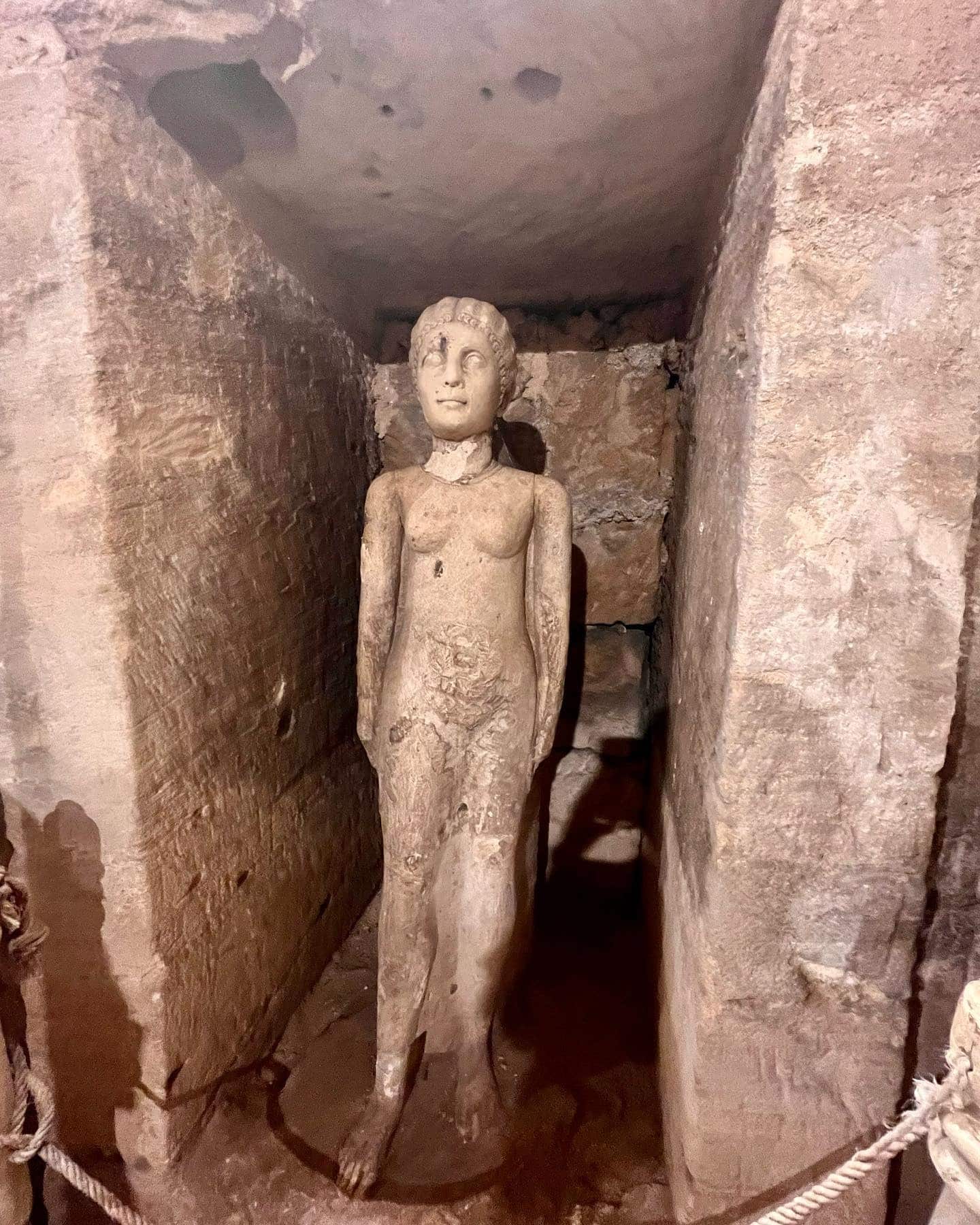
The Spiral Staircase
A circular staircase leads down into the catacombs, which were carved into the bedrock.
This staircase was used to lower deceased bodies into the tombs.
The catacombs served as a burial site from the 2nd century to the 4th century.

The Catacombs of Kom el Shoqafa consist of 3 levels, accessed via a spiral staircase.

1. First Level:
This level includes the main entrance and the rotunda, which leads to various burial chambers and alcoves.
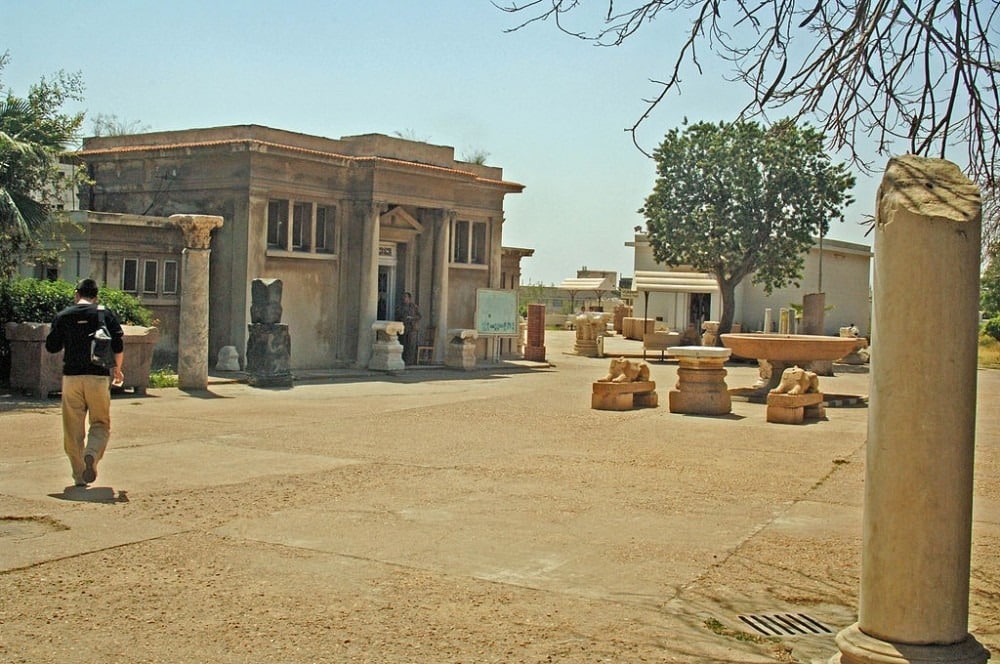
It also features a triclinium, a funeral banquet hall where family and friends gathered to celebrate and commemorate the deceased.
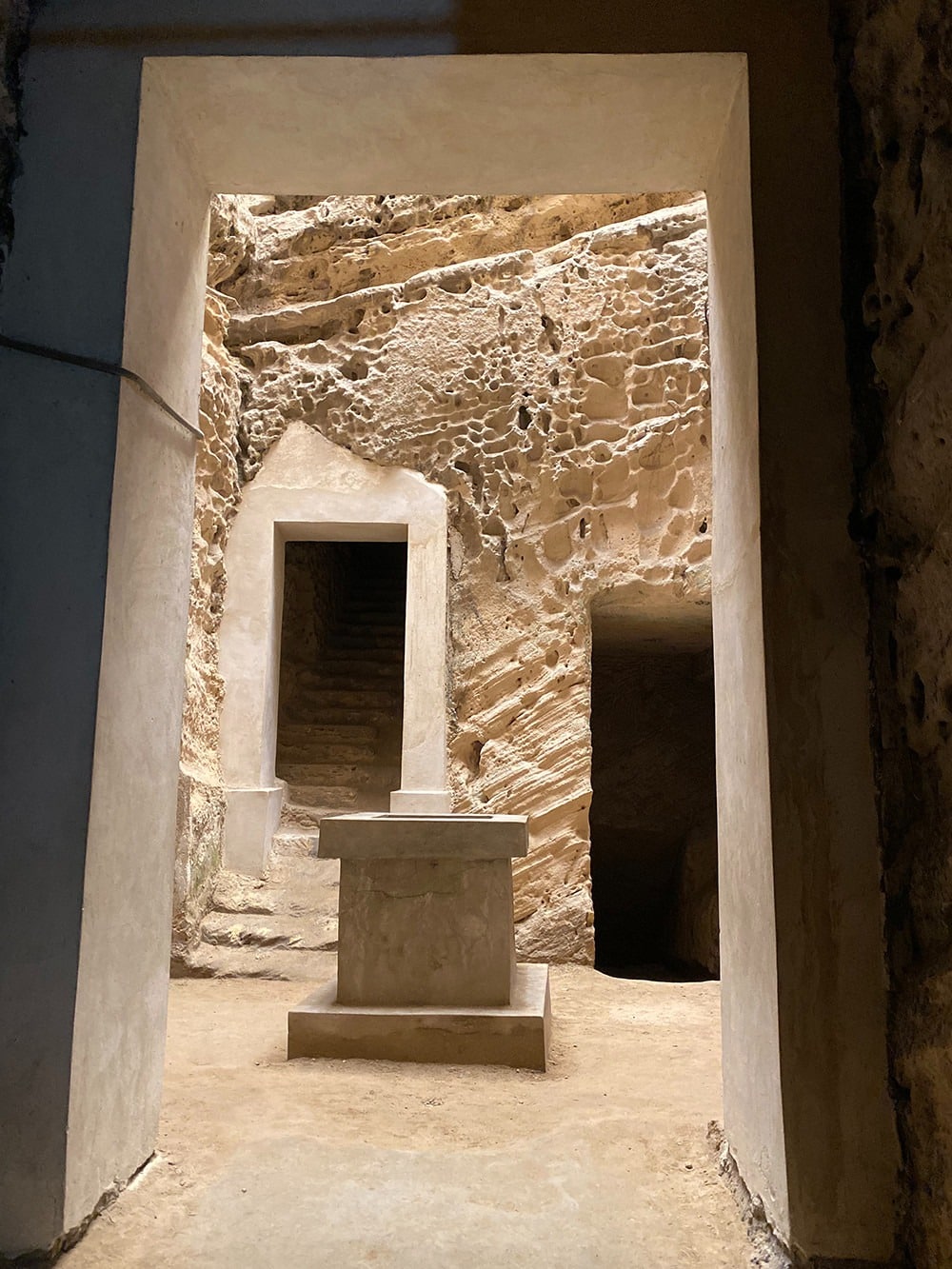
2. Second Level:
This level contains more burial chambers, used as burial chambers for family members.
The Hall of Caracalla, which holds the bones of horses believed to have belonged to Emperor Caracalla, is also located here.
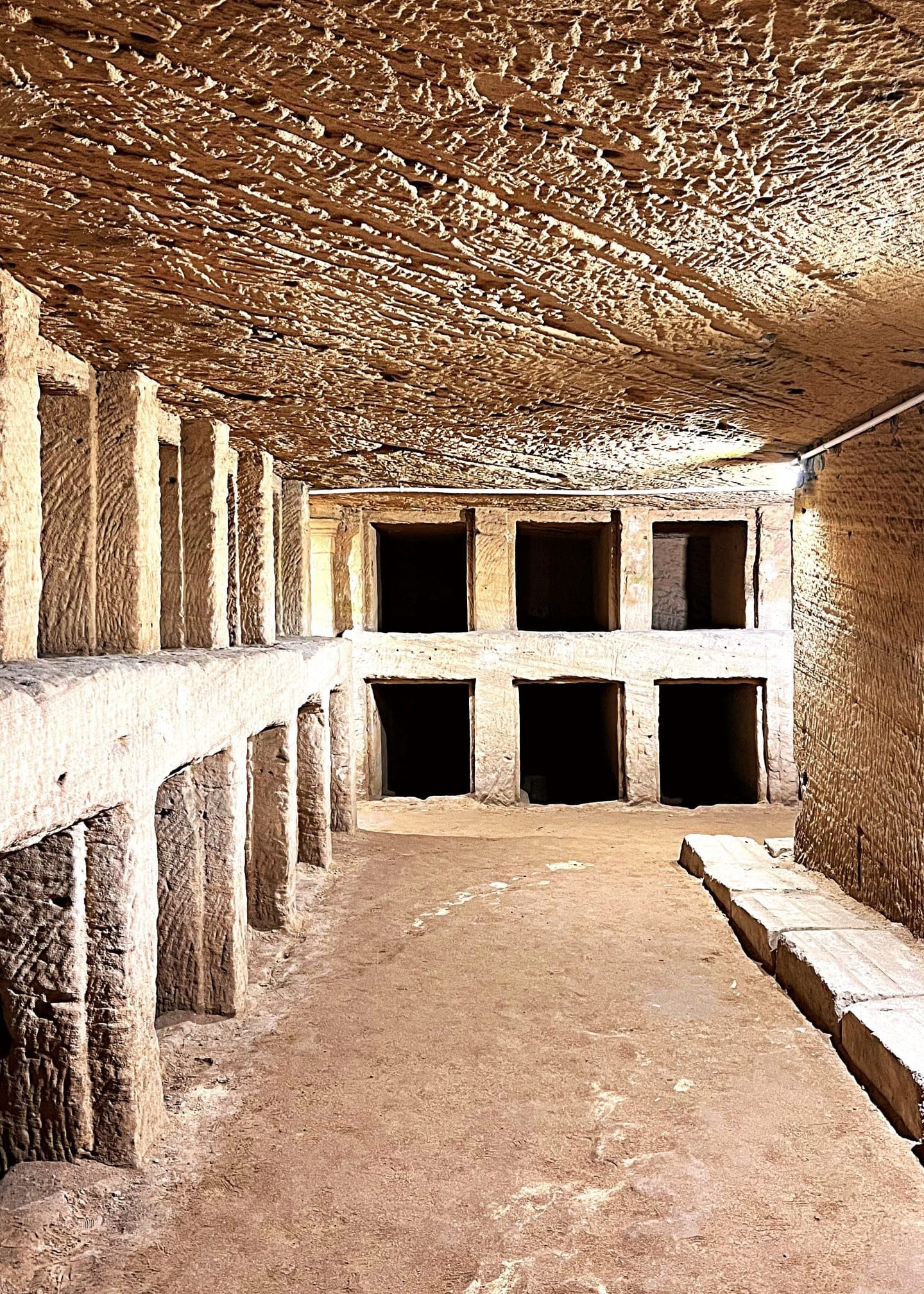
3. The Third and Final Level:
The lowest level was often underwater until recent restorations.
It contains a central burial chamber, which is the most impressive part of the complex.

The room is carved from solid stone and has a vaulted ceiling, decorated with intricate patterns and symbols.
In the center of the room is a large coffin, believed to be the final resting place of the family patriarch.
The Principal Tomb Chamber (Central Burial Chamber)
At the entrance of the principal tomb chamber, there is a temple-like façade supported by two columns adorned with papyrus, lotus, and acanthus leaves, typical of ancient Egyptian design.
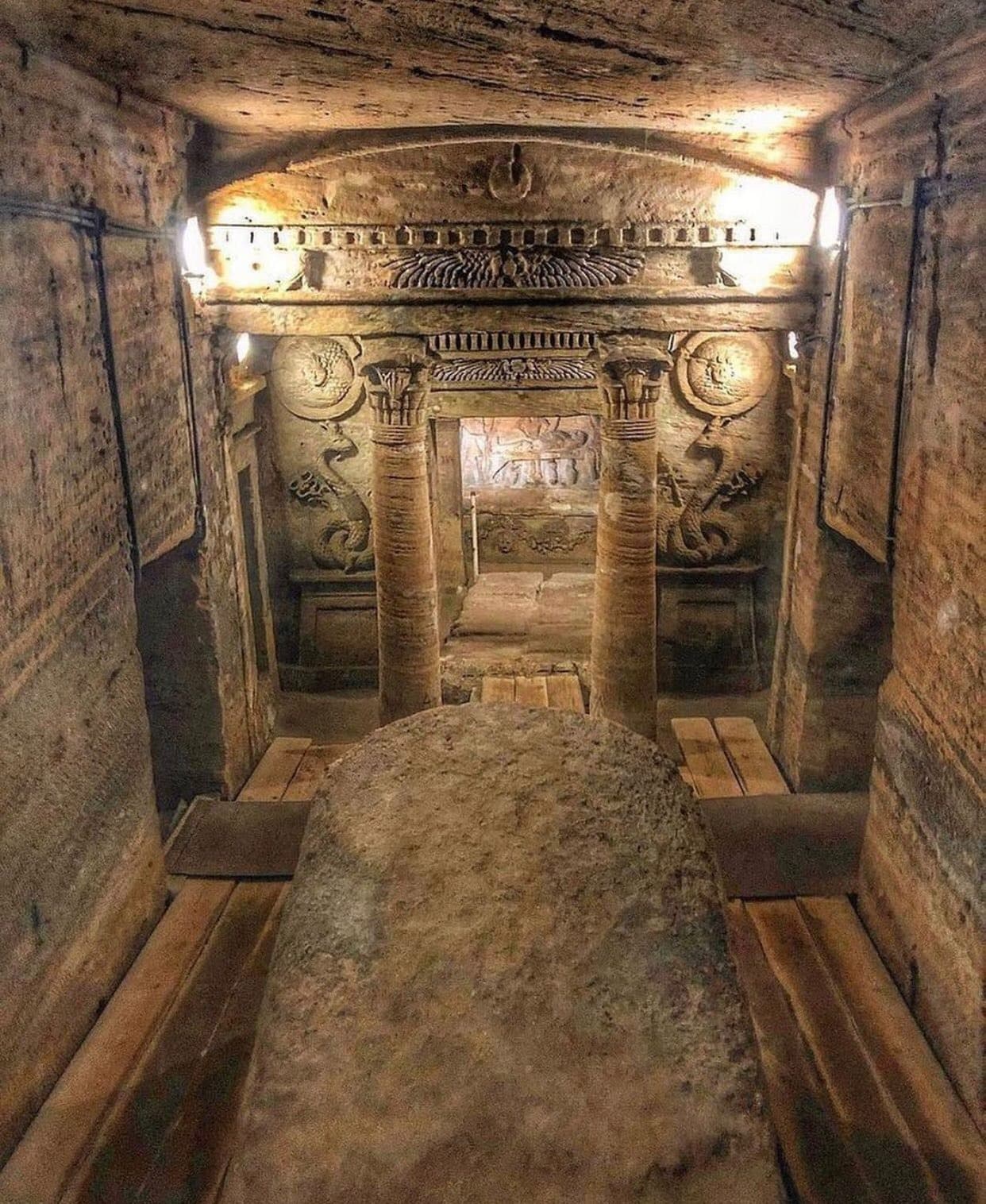
Flanking the entrance are carved Agathodaemons in the form of snakes, wearing symbols from Roman, Greek, and Egyptian cultures.
The architrave above features a relief of a central winged sun-disc, flanked by Horus falcons, symbolizing protection.
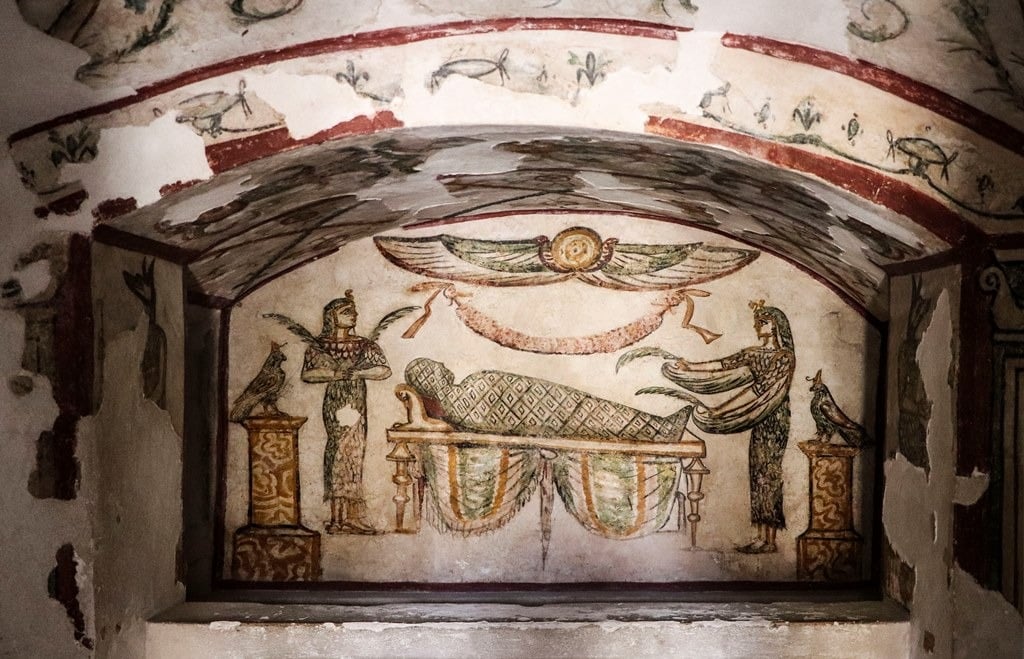
Inside, sculptures of a man and a woman depict a blend of Egyptian rigidity and lifelike Greek features, including Roman hairstyles.
The chamber contains three large stone sarcophagi with non-removable covers, arranged along the sides.
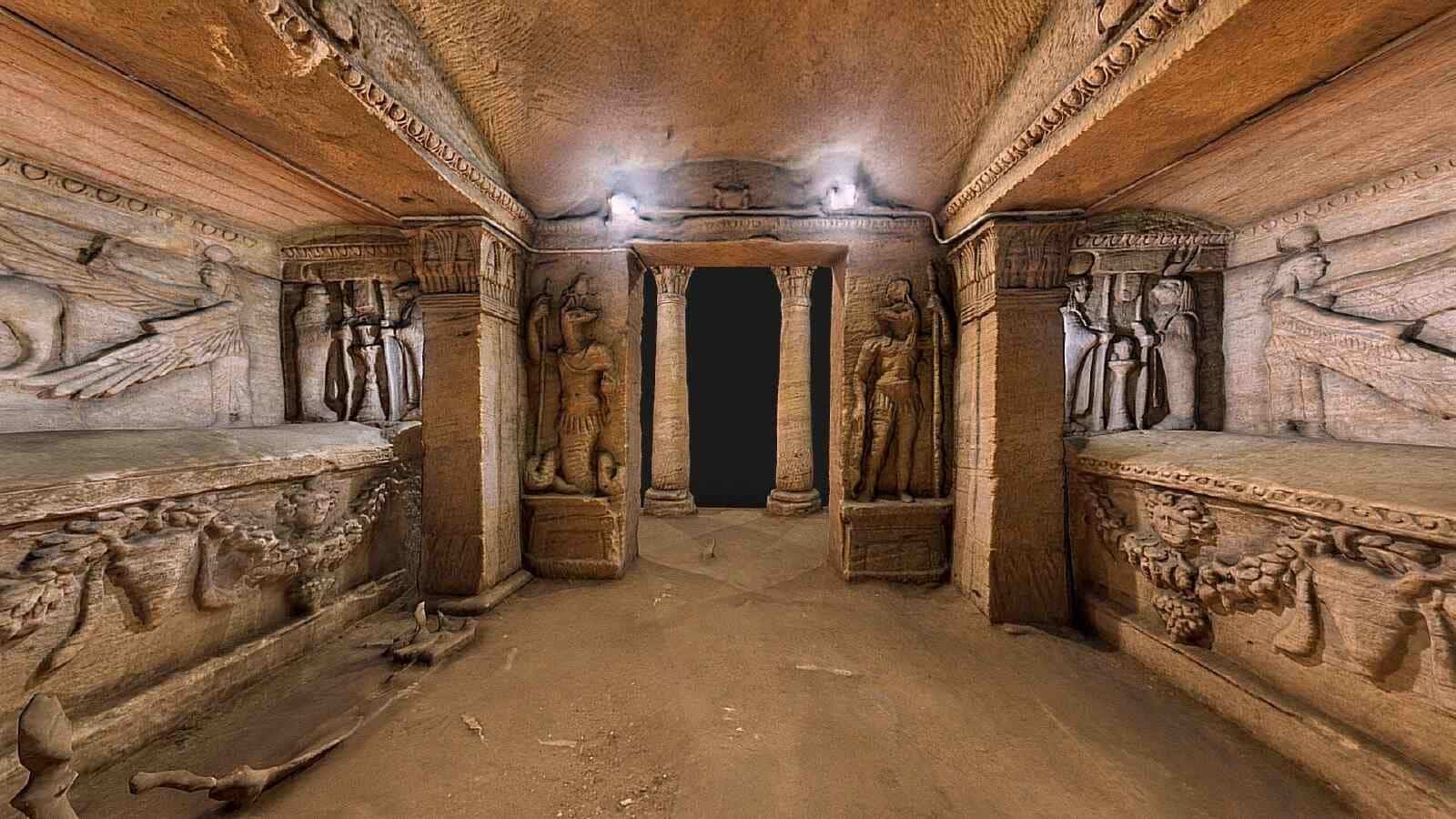
Bodies were likely placed inside from behind through a surrounding passageway.
A hallway with deep walls provides burial recesses for mummies.

Sarcophagi are decorated with garlands and reliefs depicting scenes from Greek mythology.
The central panel shows Anubis in Roman attire, mummifying a body on a lion bed with three canopic jars beneath.
Lateral panels depict scenes like the Apis-bull receiving offerings, illustrating cultural fusion within the catacombs.
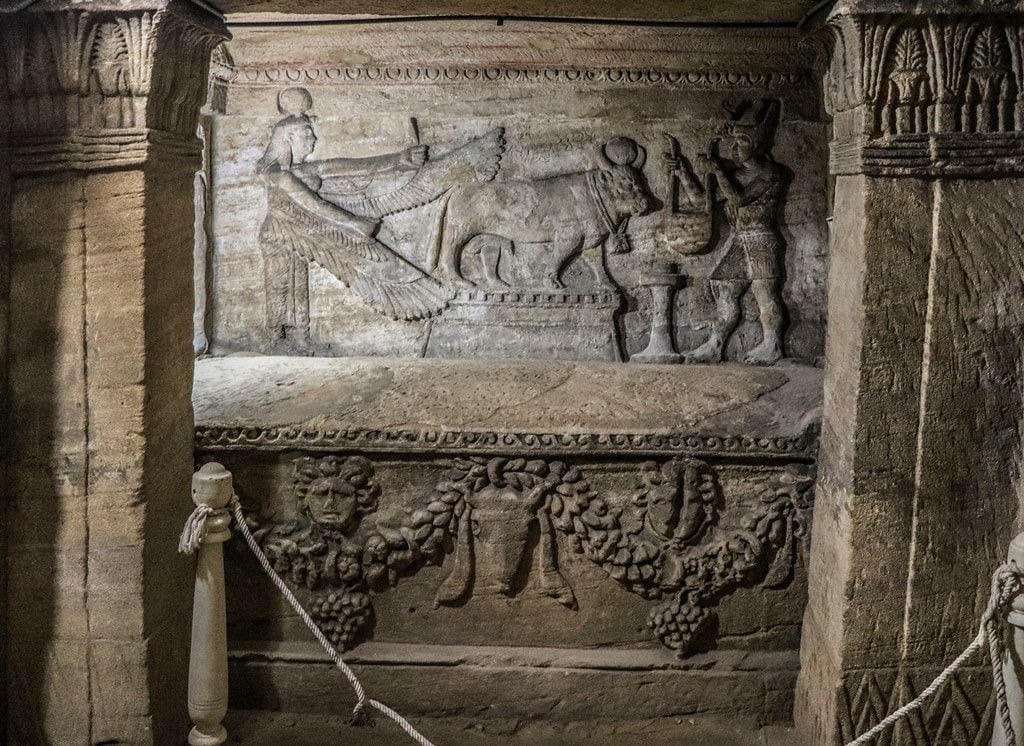
This chamber exemplifies the rich cultural interchange of ancient Alexandria, blending religious symbols and artistic styles from across the Mediterranean world.
The Stagni Tomb
The Stagni Tomb, excavated in Alexandria in 1989, exemplifies cultural exchange and gender-specific decoration in Roman-era Alexandrian funerary art.
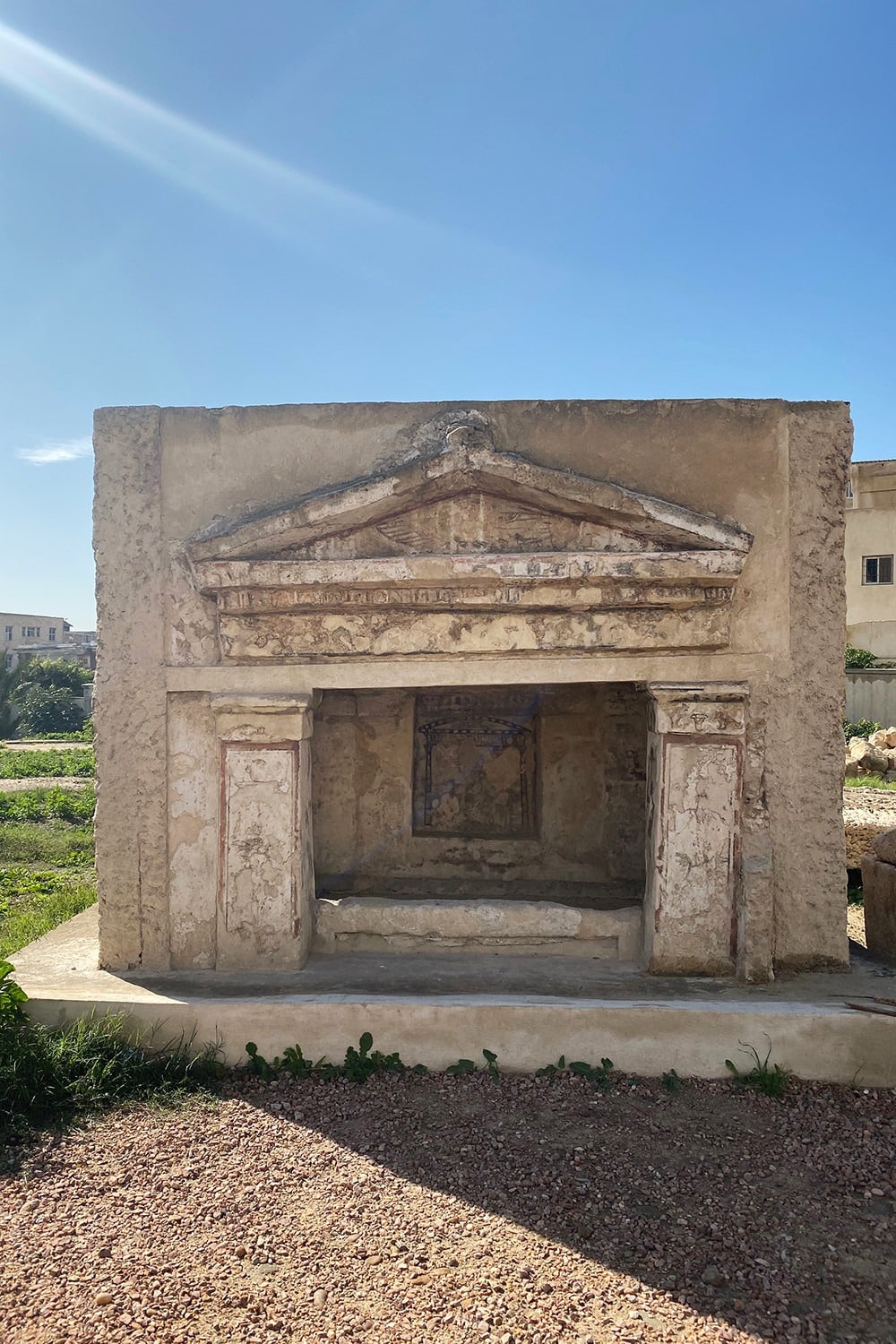
The Tomb of Selvago
The tomb of Selvago was unearthed in 1967 in a village near Itai El Barod Center, in El Behera Governorate. This Greek man, named Selvago, owned the land where the tomb was found.
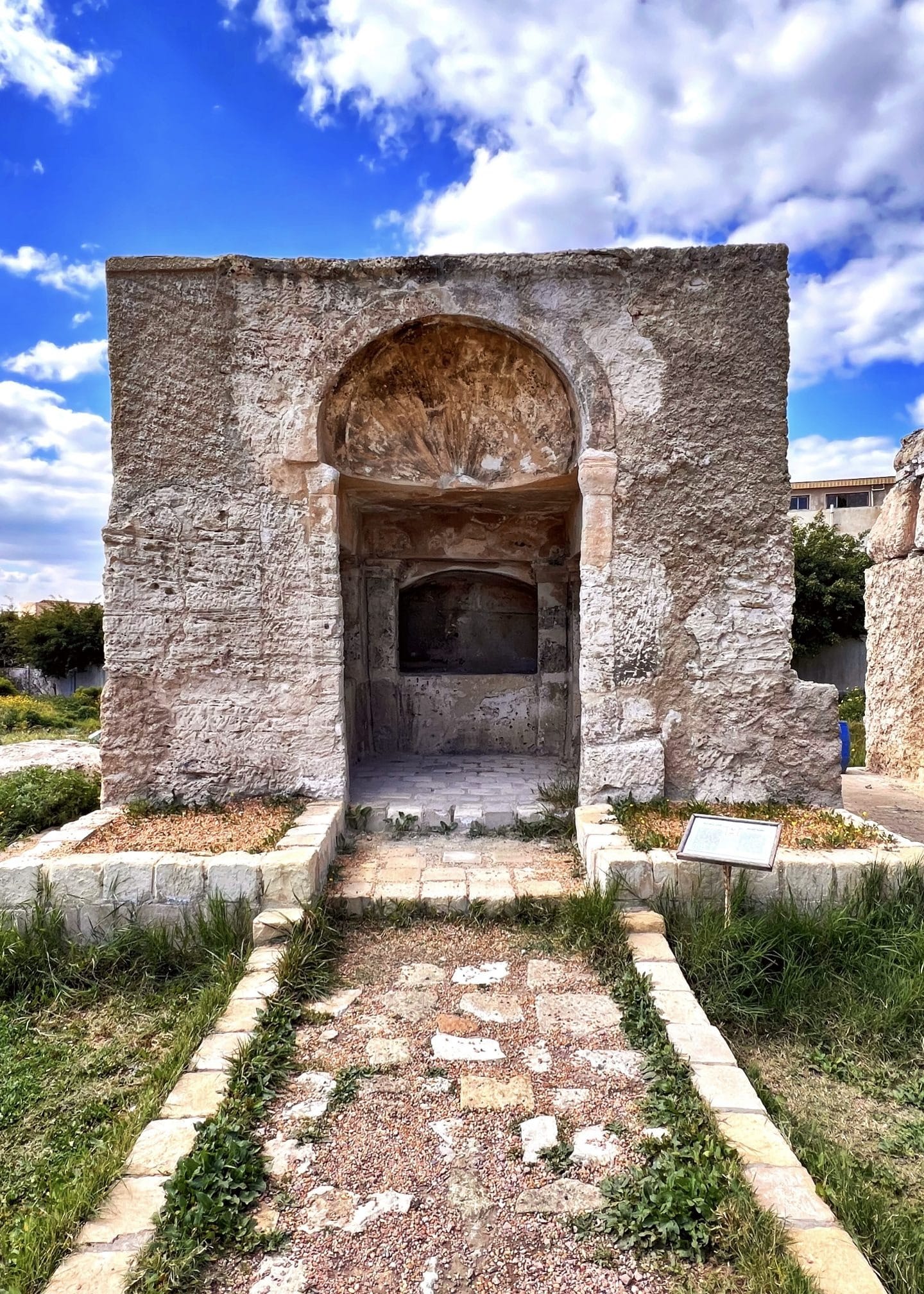
Visiting The Catacombs Of Kom El Shoqafa
Today, the Catacombs of Kom Ash Shuqqafa are open to the public daily from 9 am to 4:30 pm.
The entrance fee is 60 LE per person.
Visitors can reach the site by Careem or on foot, depending on their location in Alexandria.


